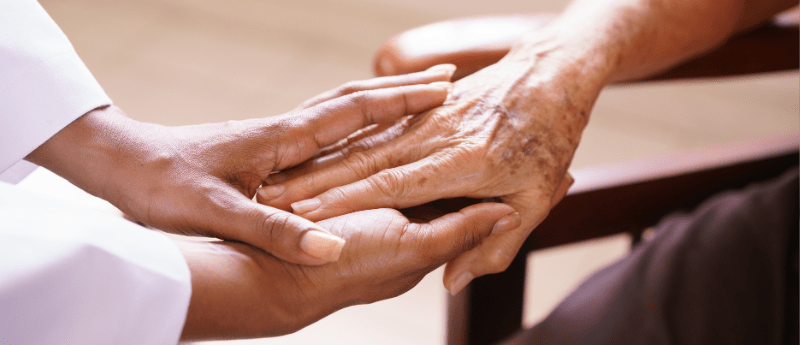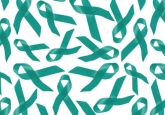Why are certain populations at a greater risk of developing cancer?

 In this interview we speak with Wayne Lawrence from the National Cancer Institute (USA) about his work on cancer risk, social inequalities and structural racism, and how this research can help inform policy development and ultimately reduce cancer disparities.
In this interview we speak with Wayne Lawrence from the National Cancer Institute (USA) about his work on cancer risk, social inequalities and structural racism, and how this research can help inform policy development and ultimately reduce cancer disparities.
What impact does the neighborhood environment have on cancer outcomes among marginalized populations?
The neighborhood environment can influence cancer risk, treatment and long-term survival. For example, residing in a neighborhood with limited exercise opportunities (e.g., walkability, active transportation), lack of access to fresh foods and high concentration of air pollution have all been linked to elevated risk of cancer. Individuals who reside in low socioeconomic neighborhoods are more likely to experience barriers to accessing a cancer specialist, largely due to longer travel time to access care. Additionally, prior studies have reported that older cancer patients that reside in high-poverty neighborhoods have poorer outcomes compared to their counterparts in more affluent neighborhoods, often due to a lack of health-promoting resources and greater exposure to psychosocial stressors. These neighborhood characteristics also impact disparities in long-term cancer survival, such as poor access to physicians who can provide the tailored medical care that cancer survivors need, poor accessibility to healthy foods, limited areas to safely engage in physical activity, and greater exposure to neighborhood stressors.
What methodologies or data sources do you employ to navigate the complex factors you are investigating?
My work uses data from the U.S. Census, Centers for Disease Control and Prevention National Death Index and large cohort studies to understand the role interpersonal and environmental exposures contribute to health disparities. For instance, my work examining racial residential segregation uses an individual’s address and census data to determine the racial composition of their area compared with the larger geographic area. I use similar approaches for examining the association between neighborhood socioeconomic attributes and health. Additionally, my research investigating the influence that psychosocial stress (i.e., experiences of racial discrimination) has on adverse health uses questionnaire data from cohort studies that measure an individual’s exposure to psychosocial stressors.
 Uncovering the link between cancer disparities and climate change
Uncovering the link between cancer disparities and climate change
Discover the influence of social and environmental factors on cancer disparities in this podcast interview with Dr Kilan C Ashad-Bishop.
Could you tell us about your work on the Connect for Cancer Prevention Study and how you have approached identifying measures related to social inequalities and structural racism?
I serve as the Co-Chair of the Structural and Social Determinants of Health (SSDOH) working group of the Connect for Cancer Prevention Study. The Connect for Cancer Prevention Study is a large study that aims to better understand the causes of cancer and how to prevent cancer. The SSDOH working group is tasked with identifying questionnaires to include in the study that measure individual-level experiences with structural racism. We also identify measures that will allow for investigating the influence of where people are born, live, learn, work, and age have on cancer risk, mortality, and quality of life. The SSDOH working group recruited leaders in social determinants of health and/or structural racism to discuss potential measures to include in the study. Over the course of a year, we examined survey questionnaires from various cohorts (cancer and non-cancer cohort) and spoke with researchers that helped develop each measure to determine whether the proposed questionnaires address the working group’s aim and whether they are relevant to a diverse group of participants.
In which ways would you like your research to be translated into shaping public health interventions or policies?
My overall research is dedicated to identifying and understanding why certain populations are at greater risk for cancer or have poorer cancer survival. Therefore, the goal is for my research to provide evidence that will inform policy development and public health interventions aimed at reducing cancer disparities, especially among medically underserved and structurally marginalized communities.
Interviewee profile:
I am a social epidemiologist and in my research, I focus on understanding how the social environment contributes to disparities in cancer risk and mortality among structurally marginalized populations. More specifically, I study how the residential circumstances in which individuals are born, grow, live, work, and age affect their health and quality of life. Currently, I am investigating the contributions of racial residential segregation, psychosocial stressors, and barriers to quality medical care to exacerbating racial disparities in cancer risk and mortality.
I completed a Bachelor of Science in Health Science at the University of Hartford (CT, USA), Master of Public Health in Epidemiology at Georgia Southern University (GA, USA), and Doctor of Public Health in Epidemiology at the State University of New York at Albany (NY, USA), where I was also a Presidential Doctoral Fellow at the Center for the Elimination of Minority Health Disparities. I joined the National Cancer Institute in 2020 as a Cancer Prevention Fellow and was promoted to Research Fellow in 2022.
The opinions expressed in this article are those of the author and do not necessarily reflect the views of Oncology Central or Taylor & Francis Group.





